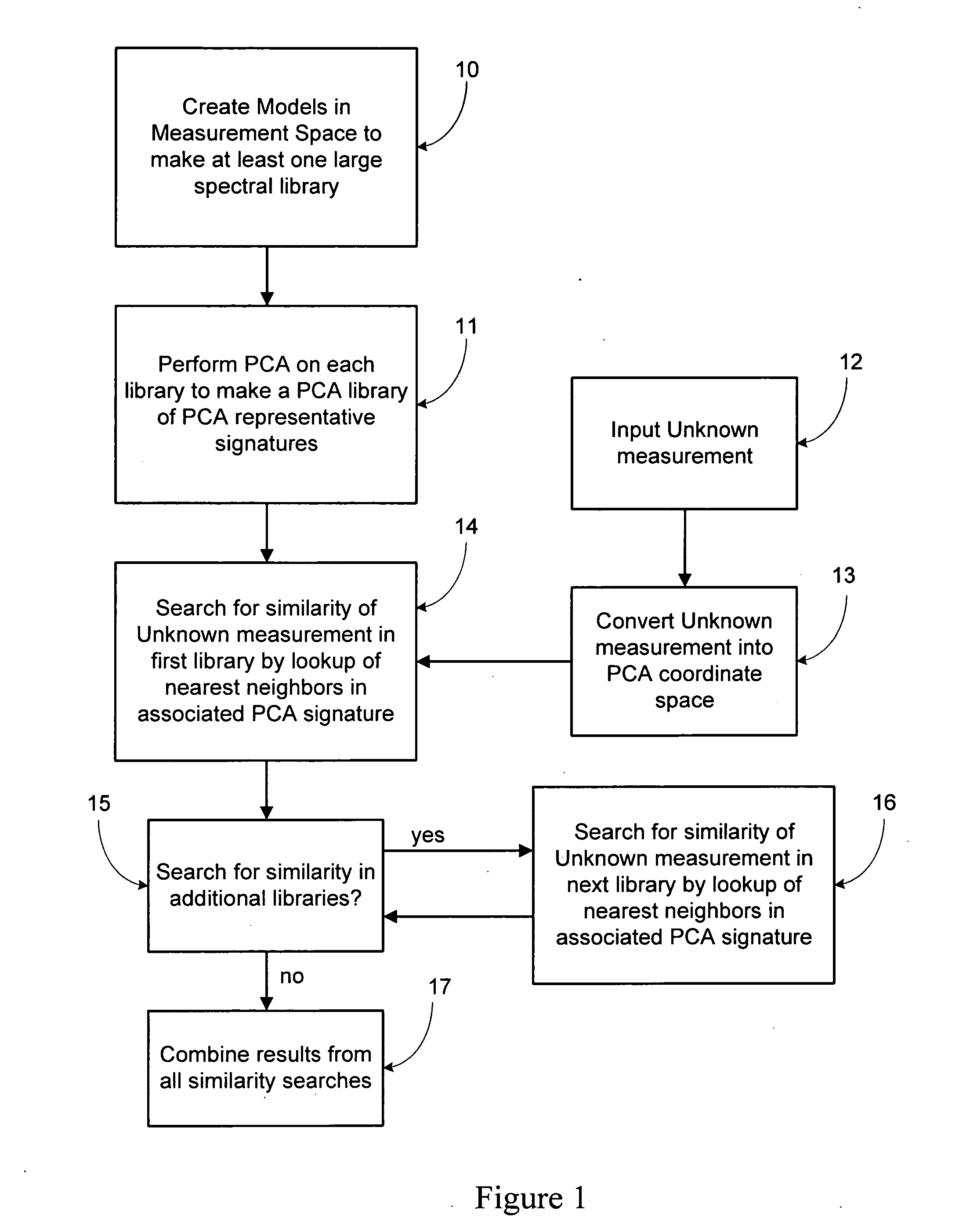Real time gamma-ray signature identifier
a gamma-ray signature and source identification technology, applied in chemical methods analysis, instruments, x-ray spectral distribution measurement, etc., can solve the problems of limiting the use of only peaks, identifying difficult, and automating full spectrum analysis to run unattended on a computer,
- Summary
- Abstract
- Description
- Claims
- Application Information
AI Technical Summary
Benefits of technology
Problems solved by technology
Method used
Image
Examples
Embodiment Construction
[0041] The present invention is generally directed to a gamma-ray signature identification method and system by full spectrum analysis, using principal component analysis (PCA) to substantially compress or reduce one or more analytically comprehensive libraries of modeled, tabulated or otherwise predetermined spectra into a corresponding small basis set(s). The basis set is a transformed and minimized representation of all spectra in the library, and is used instead of the library entries for fitting and identifying an unknown spectrum. Moreover, the use of the basis set enables the identification of the unknown spectrum with a single regression / simple projection, and avoids the multiple regressions required in the prior art when comparing against each spectrum in a library. One advantage of this arrangement is that it substantially reduces the processing time and computing resources necessary to perform the identification against an existing library. It also substantially reduces t...
PUM
 Login to View More
Login to View More Abstract
Description
Claims
Application Information
 Login to View More
Login to View More - R&D
- Intellectual Property
- Life Sciences
- Materials
- Tech Scout
- Unparalleled Data Quality
- Higher Quality Content
- 60% Fewer Hallucinations
Browse by: Latest US Patents, China's latest patents, Technical Efficacy Thesaurus, Application Domain, Technology Topic, Popular Technical Reports.
© 2025 PatSnap. All rights reserved.Legal|Privacy policy|Modern Slavery Act Transparency Statement|Sitemap|About US| Contact US: help@patsnap.com


